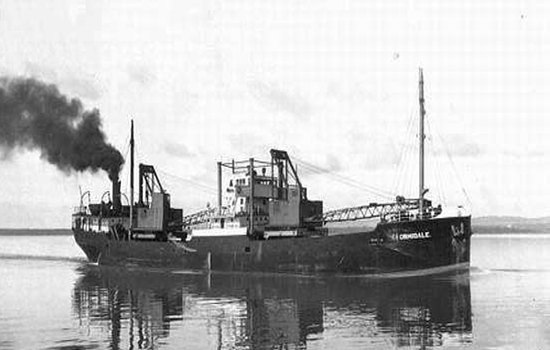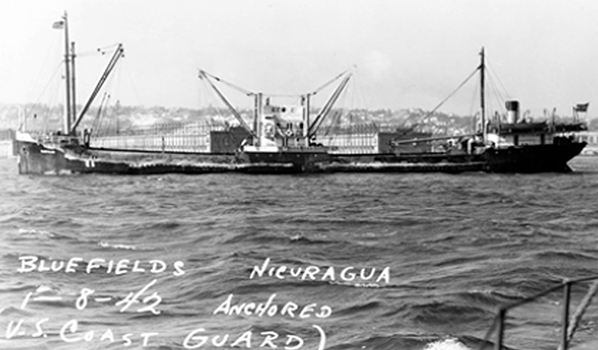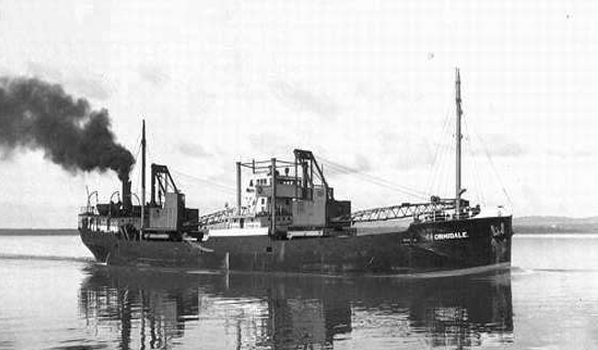Bluefields
Ship Stats
Location: 34°45'43.60"N, 75°30'17.86"W (34.76211, -75.50496)
Depth: 750 feet
Vessel Type: Freighter
Length: 250.5 feet Breadth: 43.0 feet
Gross Tonnage: 2,063 Cargo: Two cars, radio, empty burlap bags, and drums of carbide and oil
Built: 1917, Manitowoc Shipbuilding Co., Wisconsin, USA
Hull Number: 81 Port of Registry: Nicaragua
Owner: Garcia A. and Cia. Ltda (Nicaragua)
Lloyd's Register Details: One deck, two diesel engines, dual shaft, two screws
Former Names: Jupiter (Garcia Lizardo, 1938-1941); Ormidale (Gravel Products Co., 1923-1938); Astmacho III (Astmacho Navigation Co., 1920-1923); Lake Mohonk/Motor I (U.S. Shipping Board, 1917-1920)
Date Lost: July 15, 1942
Sunk By: U-576 Survivors: 24 of 24 survived (0 dead)
Data Collected on Site: Side scan sonar and high resolution multibeam
Significance: Bluefields and U-576 are individually and collectively significant to American military history, maritime history and historic archaeology. They represent the physical remains of the only World War II naval battlefield off the East Coast of the United States where both the aggressor and it's victim are present. Their remains, sitting 1,030 feet apart, in 690 to 750 feet of water, 30 miles off Cape Hatteras, represent the results of the Battle of Convoy KS-520, part of the Battle of the Atlantic off the American coast during World War II.
The SS Bluefields and U-576 were nominated to the National Register of Historic Places in October 2015.
Wreck Site
Bluefields rests in 750 feet of water, just over 1,000 feet from U-576. Bluefields' steel hull appears intact from the keel up to the main deck level and there is evidence of the two cargo hold hatches, one at the bow, and one aft of the central deckhouse. The masts and cargo booms have fallen down and are laying on the main deck.
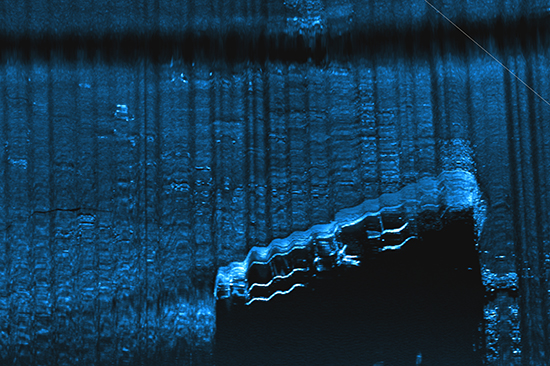
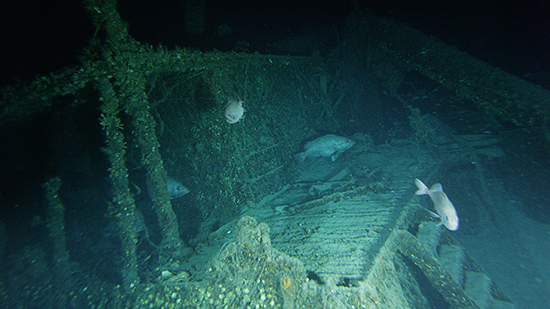
Historical Background
Although technically a merchant vessel, the freighter Bluefields served in a critical capacity during both World War I and World War II. While under construction, the vessel was requisitioned by the United States Shipping Board in emergency response to the shipping needs of World War I. The vessel was ultimately launched in 1917 as the Lake Mohonk, and left the Great Lakes serving under the U.S. Shipping Board until 1919. Following its wartime service, Lake Mohonk returned to private interests and went through several owners. In 1941, the vessel changed hands for a final time in Nicaragua and was renamed Bluefields.
On July 14, 1942, 19 merchant ships and five Navy and Coast Guard escort vessels of convoy KS-520 departed Norfolk, Virginia, headed to Key West, Florida. During this time, KS-520 would experience constant threat from German U-boats known to be operating in the mid-Atlantic, especially off the North Carolina coast. In the late afternoon of July 15, U-576 patrolling near Cape Hatteras began to fire four torpedoes upon the heavily armed convoy: two hit Chilore, one hit J.A. Mowinckle and a fourth hit the freighter, Bluefields. Shortly after, U-576 surfaced and ultimately was sunk by a combination of surface fire and aerial depth charges. Chilore and J.A. Mowinckel were salvaged after the attack, but Bluefields sank within minutes of the torpedo strikes. In addition to the deaths of the submarine crew, the skirmish resulted in four Allied casualties.
